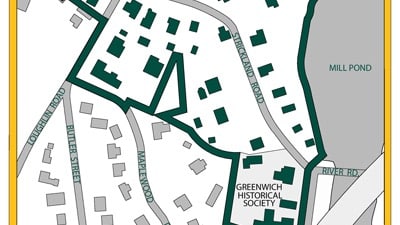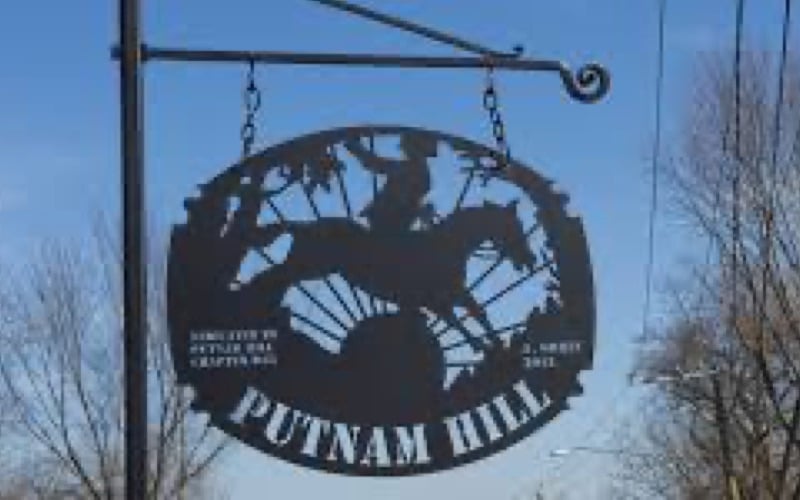Strickland Road
The Strickland Road Historic District encompasses the area known historically as the Lower Landing, a former maritime center and later home to the Cos Cob art colony. The historic road follows Strickland Brook from the Post Road to Cos Cob Harbor where a tidal dam, built by David Bush in 1763 at the mouth of the brook, created Mill Pond.





